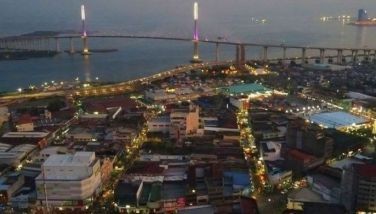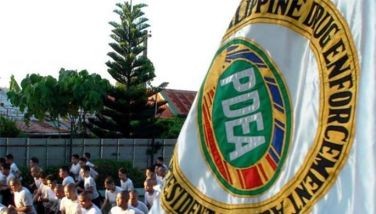Doppler radars busted
CEBU, Philippines - A rather ironic and challenging time.
Just as state weather bureau forecasted an average of five typhoons for the last quarter of the year seen to pass through the region, the two Doppler radars in Mactan and Samar are out of operation.
The one in Guian, Eastern Samar, was destroyed by super typhoon Yolanda last year while the one in Mactan went out of commission due to wear and tear just this July.
Doppler radar is a radar tracking system using the Doppler Effect to determine the location and velocity of a storm, clouds and precipitation. It is considered one of the most reliable real-time tools used by PAGASA to this date.
The Doppler Effect is the increase or decrease in frequency of sound, light or other waves as source and observer move toward or away from each other.
Despite this, PAGASA Visayas chief Oscar Tabada stressed that they are employing best alternatives to their knowledge like satellite imaging, Weather Research and Forecasting (WRF) model, along with other international numerical weather modern.
WRF is a mesoscale numerical weather prediction system designed to serve both atmospheric research and operational forecasting needs.
“Maka-affect g’yud na (busted Doppler radars) kay using the radar, we were able to accurately predict the path and rainfall concentration of tropical storm Sendong, Pablo, and most importantly super typhoon Yolanda,” Tabada explained.
The Doppler radar, he added, is able to determine the actual position of the weather disturbance, its real-time location as well as get the exact location of the typhoon’s eye.
In lieu of the Doppler radar needing replacement parts that have yet to be ordered from the United States, PAGASA has purchased a mobile radar to be used in Guian, which faces the Pacific Ocean where typhoons entering the country originate.
“Para makakuha gihapon ta’g data for a more or less accurate weather forecasting. For the meantime, mao sa nay gamiton. We purchased it June. Delivery nalang ang kuwang. Ang iyang capability dili parehas sa Doppler nga nagpundo sa usa ka lugar since mobile man ni atong temporary replacement to be mounted in a truck,” Tabada said.
While Doppler radar covers an effective range of 300 kilometers (480 km maximum), the mobile radar’s effective range is only 120 km.
PAGASA is also fortifying its “nowcasting”, giving text and social media warnings for thunderstorms and rainfall advisories but Tabada admitted this needs a lot of improvement.
“Ang nowcasting nato naa pay deperensya. Kinahanglan pang i-evaluate. Ang uban natong hatagan og advisory muhatag og feedback nga delayed ang atong warning. Feedback is very important for us to know our forecast’s accuracy,” Tabada said.
He also urged the public to be extra vigilant in monitoring weather advisories through different media outlets.
Others may opt to directly call PAGASA Mactan through (032) 340-4143 / 340-1868 or follow their social media accounts over Facebook and Twitter. —/BRP (FREEMAN)
- Latest























